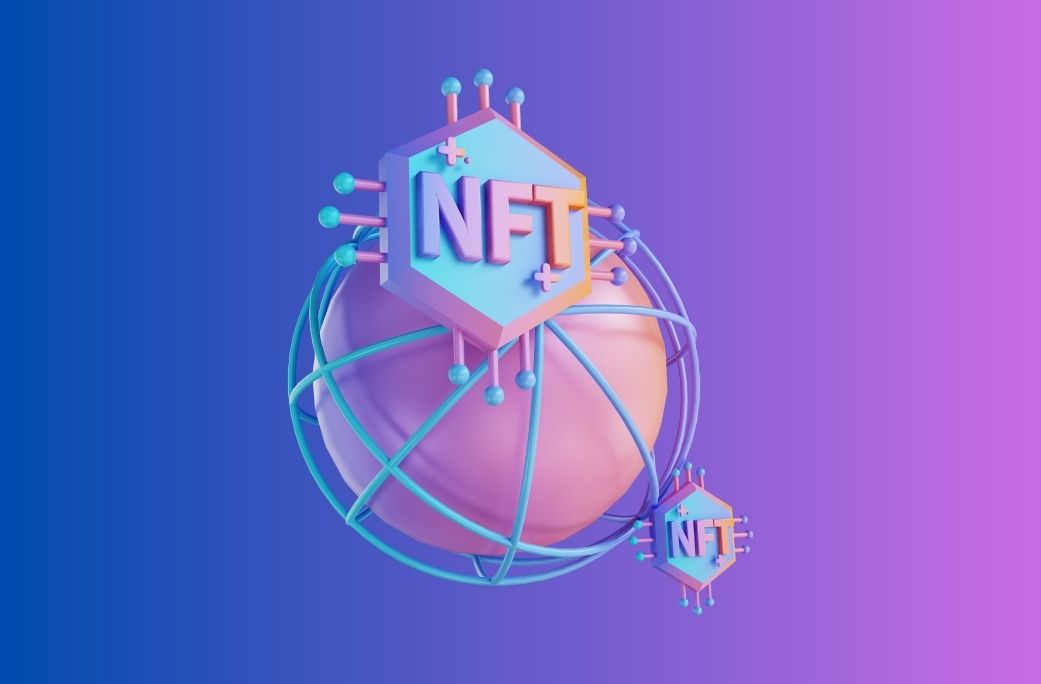In the fast-paced world of cryptocurrencies, NFTs (Non-Fungible Tokens) have emerged as a groundbreaking phenomenon, revolutionizing the concept of digital ownership. With their unique attributes and applications in various industries, NFTs have gained immense popularity, heralding a new digital ownership and creativity era.
Leveraging the power of blockchain technology, NFTs enable individuals to authenticate, buy, and sell one-of-a-kind digital assets with unprecedented security and transparency.
Understanding NFTs
Non-Fungible Tokens are digital assets that represent ownership of a unique item or piece of content. Unlike cryptocurrencies like Bitcoin, which are interchangeable and hold the same value, each NFT is distinct and inseparable, possessing its own verifiable identity.
These tokens are created, stored, and traded on blockchain networks, ensuring immutability and scarcity. Blockchain technology, the backbone of NFTs, enhances security and trust, making fraudulent ownership claims virtually impossible.
The Power of Digital Ownership
In the early days of the internet, digital content was effortlessly copied and shared, leading to challenges in establishing genuine ownership. However, NFTs offer a groundbreaking solution by providing each asset’s digital certificate of authenticity.
This certificate is stored on the blockchain, linking the owner to the unique NFT. Whether it’s a piece of digital art, a virtual property, or a memorable collectible, NFTs empower creators and collectors with true digital ownership rights, ushering in an era where digital assets hold tangible value.
NFTs and the Art Industry
The art industry is one of the most impactful areas where NFTs have left an indelible mark. Previously, artists struggled to monetize their digital creations, often facing copyright infringement and unauthorized reproduction issues. NFTs have disrupted this paradigm by enabling artists to mint their artwork as NFTs, certifying its provenance and rarity.
This newfound capability has allowed creators to reach a global audience, monetize their digital masterpieces, and receive royalties from future sales without intermediaries.
Virtual Real Estate and Gaming
Beyond the art industry, NFTs have also penetrated the virtual real estate and gaming industries. In virtual worlds, NFTs represent unique pieces of virtual land and property that users can buy, sell, and develop. These digital properties hold value in the same way physical real estate does, and their scarcity and location play a significant role in determining their worth.
Similarly, in the gaming realm, NFTs have revolutionized the ownership of in-game assets. Players can now truly own their virtual items, such as weapons, skins, and accessories, as NFTs, providing them with the autonomy to trade or sell these assets outside the game’s ecosystem. This newfound ownership has fostered vibrant secondary markets where players can benefit economically from virtual endeavors.
NFTs in Collectibles and Memorabilia
NFTs have breathed new life into the world of collectibles and memorabilia. From trading cards to iconic movie props, NFTs have digitized collectible ownership. The rarity and verifiable authenticity of NFT collectibles have attracted enthusiasts and fans, driving demand and elevating the concept of digital memorabilia to new heights. This intersection of digital and tangible worlds has opened up exciting possibilities for fandom and investment alike.
Environmental Concerns and Sustainability
As NFTs continue to soar in popularity, concerns about their environmental impact have arisen. The energy-intensive process of minting and trading NFTs on certain blockchains has led to debates regarding their sustainability.
However, with the Bitcoin Era in full swing, the industry has begun to address these concerns by exploring energy-efficient blockchain alternatives and implementing eco-friendly practices.
The Future of NFTs
The future of NFTs holds immense potential. As technology advances and industries embrace digital transformation, NFTs will likely find applications beyond our current realms. From tokenized real-world assets to intellectual property ownership, NFTs can positively disrupt various sectors.
While challenges and uncertainties may arise, the ongoing development of the Bitcoin Era trading platforms, like the bitsoft 360, ensures a promising outlook for NFTs.
Conclusion
The rise of NFTs has sparked a paradigm shift in how we perceive digital ownership. With their ability to establish true uniqueness and ownership in the digital realm, NFTs have empowered artists, creators, gamers, and collectors like never before.
As we venture further into this digital frontier, it is evident that NFTs (Non-Fungible Tokens)are not just a fleeting trend but the cornerstone of a new era, the “Bitcoin Era”—ushering in a future where digital assets hold real-world significance, transforming the way we interact with, create, and value digital content.

COMMENTS